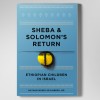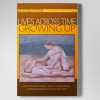Our thirty-year study was the follow-up of Brody’s cohort from 1964. In a sense we were performing an archeological dig, in which layers are often up-ended, folded around, seeking fragments, forme fruste images. Then we try to reconstruct the life history of three decades from the images we discover. In a sense, we are getting a snapshot of a character built over many years. In a sense, we are making a movie backwards. We are matching-up what is revealed to us today with what we discover in archives of observations.
We study memories.
For this, we had archival observations, which we reviewed after we completed our interviews and assessments of our 76 subjects. We chose to assess current life in several ways. First, we used the Adult Attachment Interview. Not only does this assess attachment, but it also gives us a sense of significant events in the person’s life and how their memories work. We also used semi-structure interview to assess defensive style, Erikson’s developmental level and phenomenological psychiatric status. In a sense, as analysts, the AAI was our most valuable glimpse into inner life. One asks: tell me five words to describe your mother’s relationship with you as a child; then, give me a specific memory for each word. This is deeply revealing. For instance, Fonagy has written about how one can use aspects of the AAI scoring to assess reflective capacity.
We matched how people remembered against the prospective data, finding that in general there was remarkably accurate memory for significant events and occasionally, we learned that the person’s affective memory clarified a previous research observer’s assessment; and in some instances, memory was judged far more accurate than researchers’ previous knowledge. For instance, at 6 years of age, a researcher sees that a father has been building a Heath kit project with his son; the researcher is deeply impressed with the project and believes it reflects that father’s connection with the boy. At thirty, this former child spontaneously reports that the Heath kit project was inordinately boring and reflected how this father had projects and ideas not connected with the boy’s interests.
An example of how the thirty-year old reveals a remarkable event missed by the researchers is of a mother’s recurrent psychotic depressions and suicide. When this child was seven, she refused to meet with the researchers for her annual assessment, until the headmaster insisted the child comply. The child reported that mother was vacationing in one of the family’s multiple homes – Mont Blanc or Montserrat. In fact, the mother was “vacationing” at a private psychiatric facility for eight months, where the child visited weekly. The young man was then interviewed at eighteen, reporting nothing new about his mother, who, in fact, was then institutionalized again and committed suicide within months of the interview. The thirty-year-old admitted openly that she knew she was hiding this from the researchers. I found similar capacity to hide major events as Medical Director of the Family Mosaic Program in San Francisco, a Robert Wood Johnson funded program for the 200 most disturbed children in SF. Our social workers – who were of the communities — went into the homes, the schools, the streets to find the children and the parents (many mothers were prostitutes; most fathers were in Pelican Bay for felonies). On Portrero Hill, we could find our pre-teen kids skipping school to sell drugs on the street corner, the dealers knowing that these kids would get off easy as juveniles. Yet, repeatedly we were impressed with how the extended family and the community were able to hoodwink our dedicated workers, often to the detriment of the children.
I won’t try to repeat our findings here, which we published in several articles in IJP and will be republished by Karnac as Lives Across Time. My focus is on how to learn about how inner lives are constructed and how memory works, including how memory as an ego function can be distorted when ego structure is badly affected, and how basic memories are accurate with some severe ego defects — how one man with a GAF score in the 70’s clearly recalls the dismal details of his very difficult childhood. His art work had the quality of late Arshile Gorky – an apocalyptic, dark, nature of destruction. We believe that our work can contribute to understanding how memory is constructed.
A note here about the analyst’s reaction to listening and watching these interviews. One of our innovations was to establish a likeability measure. We developed a Likert-type instrument, asking,”To what degree do I find this person believable, sincere, accurate? How much would I like to listen to this interview again?”





